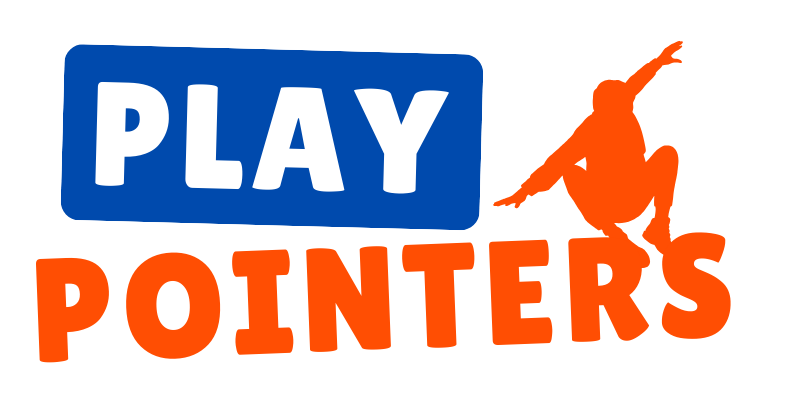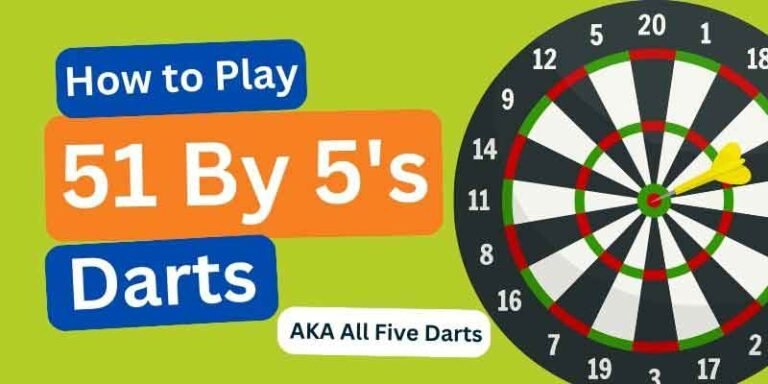How to Play 301 Darts?

Key Takeaways
- 301 darts is a race to the finish style game
- Each player starts on 301 points
- The first player to check out, is the winner
- To double out, players must hit a double with the last dart
- Players need to score as many points as possible to get to a finish quicker
What is the 301 Darts Game?
301 is a very popular game of darts among all levels of players, from the very best to the beginner. It’s not as popular as games of 501, which is played in near identical fashion.
If you know how to play 501 darts, then you won’t find it hard to understand 301 and vice versa.
What is the Objective of 301 Darts?
When playing 301, the aim of the game, is to beat your opponent by being the first player to get zero.
- To do this, you need to get as many points per round in order to reduce your score to exactly zero as fast as possible
- The maximum amount of points during one round is 180
- The quickest anyone can get down to zero in games of 301 is 6 darts, known as a perfect game
How to Play 301 Darts?
When learning how to play 301 darts, or any of the X01 games, the first thing you need to know is that players scores are counted DOWN.
Players begin on a score of 301 and the points scored during each round is subtracted from the player’s running total, and you must finish on a double with your last shot.
- The maximum amount of points during one round is 180
- The quickest anyone can get down to zero in games of 301 is 6 darts, known as a perfect game
When playing play 301, you want to get as many points per round as possible in order to reduce your score to exactly zero as fast as possible.
- Singles are worth the number of the segment
- Doubles are worth 2x the value of the numbers single
- Triples are worth 3x the value of the numbers single
- Outer ring bullseye is worth 25 points
- Inner ring bullseye is worth 50 points
Here’s a little example below
- Player A throws first and scores a total of 100 points (single 20, single 20 and triple 20)
- The 100 points scored is taken away and leaves the player on 401 on his next turn
Players throw 3 darts per round and alternate throws.
- So player A throws three darts and removes them from the board.
- Player B then steps up to the oche and takes their turn.
- Then it’s back to player A’s turn again
The first player to reach zero, playing 301, is the winner. However, players need to hit a double with their last dart to bring the score to zero.
This is known as a double-out.
If a player scores more than zero, or does not hit the double with their last dart, both scenarios are a bust when you play darts in this format.
How to Decide Who Starts?
Closest to the bullseye is the most common method of deciding who goes first. Both players throw one dart towards the center bull and whoever gets closest to the bullseye, starts the game.
Other ways to decide includes;
- Tossing a coin
- Throwing one dart each for the highest score with their off hands
What Are The 301 Darts Rules?
The rules regarding 301 darts for the most part is usually the same anywhere it is played.
- Each player has three darts per turn
- Players alternate turns throwing towards the dartboard
- Darts must stick in the board to be counted as a score
- If a dart falls and drops to the floor before being called, the dart is not counted
- Points are deducted from the player’s running total score
- Scoring more than zero is a bust, and the score reverts to the score they started the round on
- Players must finish with a double, leaving zero total points to win the game
What Does It Mean to Double In?
Doubling in requires players have to hit a double in before they can start the game.
It is also commonly known as ‘double in/double out’.
If you play with these rules, you better know that the dart doesn’t count as your first turn, and as such it won’t count towards your score.
It is only registered as game starting shot.
- Because it does have the potential to drastically slow up games, it is not used in the professional game often.
- Unless you are fantastic at finishing, you may not find it much fun
- It is not a recommended if you are only new to playing darts
There is the potential that a player can still be stuck on 301, when the other player is on a finish.
How to Score Games of 301 Darts?
In official games, there is usually a marker, aka the chalker, who does the scoring. Playing among your buddies, usually someone who is sitting out will take on the role of chalking the game.
The easiest way to score games of 301:
- Separate each of the players totals with a line down the middle
- Place the name of each player across the top
- Write 301 below the names
- Count the total after each turn and subtract it from the player’s current score on the scoreboard

Variations of 301 Darts
Increase the Length of Games
Games can be over so quick, that you may want to play 501, 701 or even 1001 games.
These can last longer if that what you are after, and they follow the same rules as 301.
Introduce Different Starting Scores
If there is a gap in the levels of the two players, you may want to think about starting on different scores.
Advanced players could start on 501 for instance, or even higher if they are very advanced against a complete beginner.
Double In Only For The Skilled Player
Again, on the subject of skills, you could also handicap skilled players with the double in rule.
This would only apply to the advanced player, the less experienced player continues to score from the start.
301 Darts Tips to Help Your Game?
Plan Ahead
In games of 301, the format is so quick, you almost need to think about your finish from the first dart thrown.
This allows you to control the direction you wish to take towards a favorable checkout.
Even Numbers Are Better to Finish on Than Odd Numbers
Always try and get to an even number on a finish. It means if you fail to hit the finish with one dart, there is another shot immediately after.
32 is one of the best for this, because if you miss the double but hit it’s single, you potentially have one dart at a double right down to checking out 2.
For example,
- A player is left on 32 (double 16) and lands the dart inside the wire, leaving 16
- The player then goes for double 8, which is next door to 16, giving the player an immediate return to a finish
- The player also misses with this dart, leaving 8 and a shot at double 4 with the third dart
- This could potentially continue as such all the way down to 1
- If the player was left
However, some even number only have one shot to finish after a miss before numbers need to be split.
- By splitting, I mean hitting another number before you can get to a double, so 30 leaves double 15.
- If you hit a single 15, there is no double, so 15 needs to be split, so it’s at least 2 darts to a finish
Know Your Checkouts
Another tip I can offer is to know the different checkouts inside out. This comes from getting better at counting, which you will also need to do, as you learn how to play darts better.
Doing the scoring, for as many games as you can, will help you begin to count much faster.






